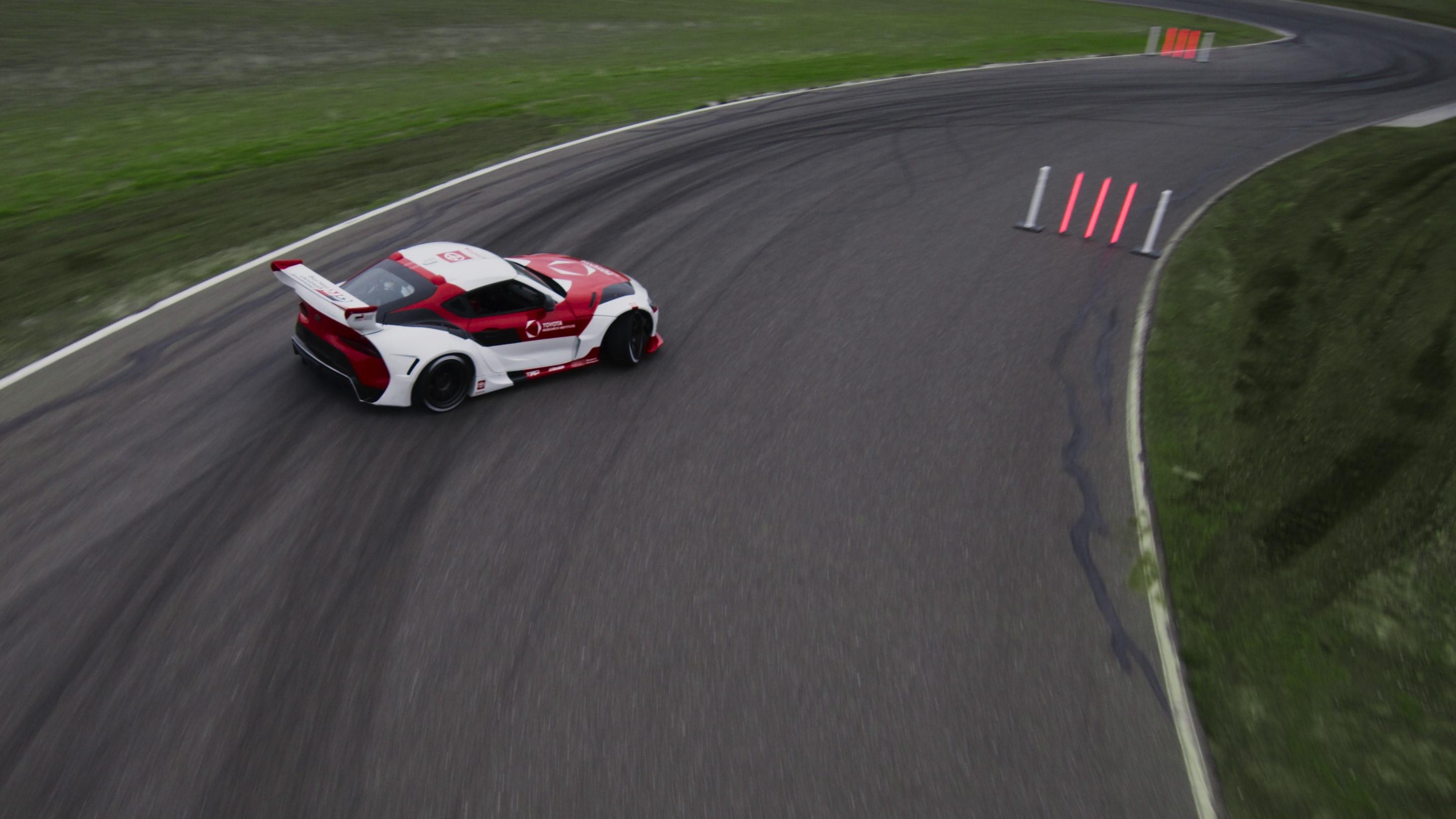
The GR Supra drifts around obstacles with a rumbling squeal. Find out why TRI is researching autonomous drifting technology.

February 2 - Toyota Research Institute (TRI), Toyota’s advanced research institute based in Silicon Valley, U.S., released a video of a test car autonomously drifting on a closed course.

The GR Supra turns corners with a loud squeal and swiftly avoids obstacles one after another. Although a safety driver is on board to take care of any emergencies, all operations, including steering, throttle, brake, clutch and gear controls, are done automatically.
But, autonomous drifting is not the end goal of this research; TRI’s goal is safety.
The driving conditions on a particular road can differ based on many factors. For example, even though we drive the same road every day, rain may change the friction of the road making it more slippery. Or heavy traffic may result in tighter gaps between road users requiring more deft vehicle control.
Some traffic accidents occur in environments that make it difficult for the average driver to maintain control, such as icy roads or situations that require an aggressive combination of steering, throttle and brake.
In such extreme situations, enhancing regular drivers with expert skills such as drift control can help them avoid accidents.
The idea is not to use advanced technologies to replace humans but to augment and enhance them temporarily with the skills of a professional driver in case of an emergency.
Drifting is only possible by balancing a variety of factors, such as countersteering and advanced load transfer, under extreme vehicle conditions.
To make this precise drift a success, TRI’s researchers have developed a novel Nonlinear Model Predictive Control (NMPC) architecture that is able to balance the objectives of staying within the lane and avoiding obstacles while drifting. This approach encodes a deep understanding of vehicle dynamics and control, allowing for updates of the vehicle’s trajectory every twentieth of a second. This high rate of control enables the vehicle to quickly adapt to changing situations on the road to ensure a collision-free trajectory.
TRI continues to advance “human-centered” safety technology for the next generation by integrating hardware and software technologies at a high level.
As advanced research on automated driving has transitioned to the development phase with a view to installing them in vehicles, TRI’s mission has been gradually changing.
Currently, TRI is shifting its focus to more “High Risk, High Reward” advanced research in four areas: “Human Centric AI” (which includes the Supra autonomous drifting), “Energy and Materials,” “Robotics,” and “Machine Learning.”
The core of these research efforts is the ambition to unlock the true value of AI to further improve the humans’ abilities and enrich people’s lives, which is also in line with Toyota’s vision of “producing happiness for all.”
Autonomous drifting is only a part of TRI’s ongoing advanced high-risk and high-reward research. They are always working to discover any surprising new technology seeds through their research. Stay tuned for their next big discovery!

